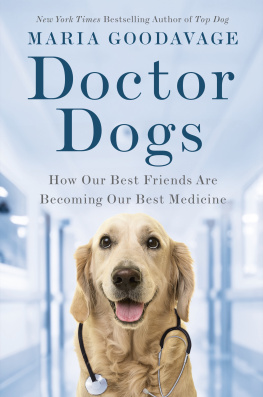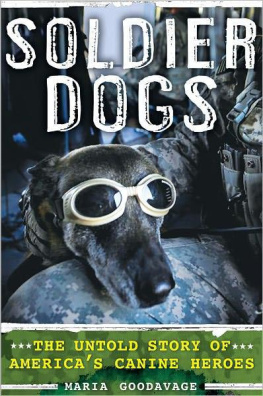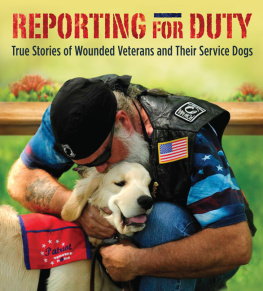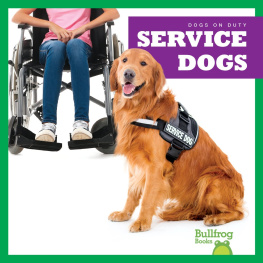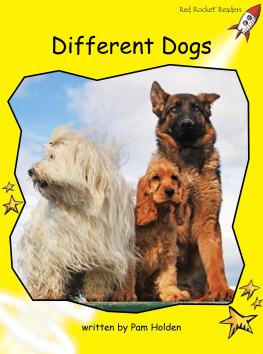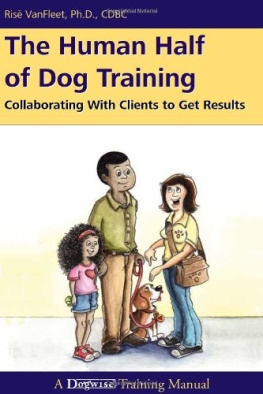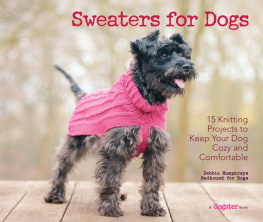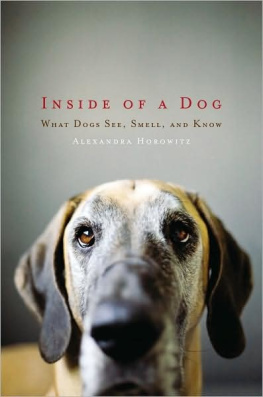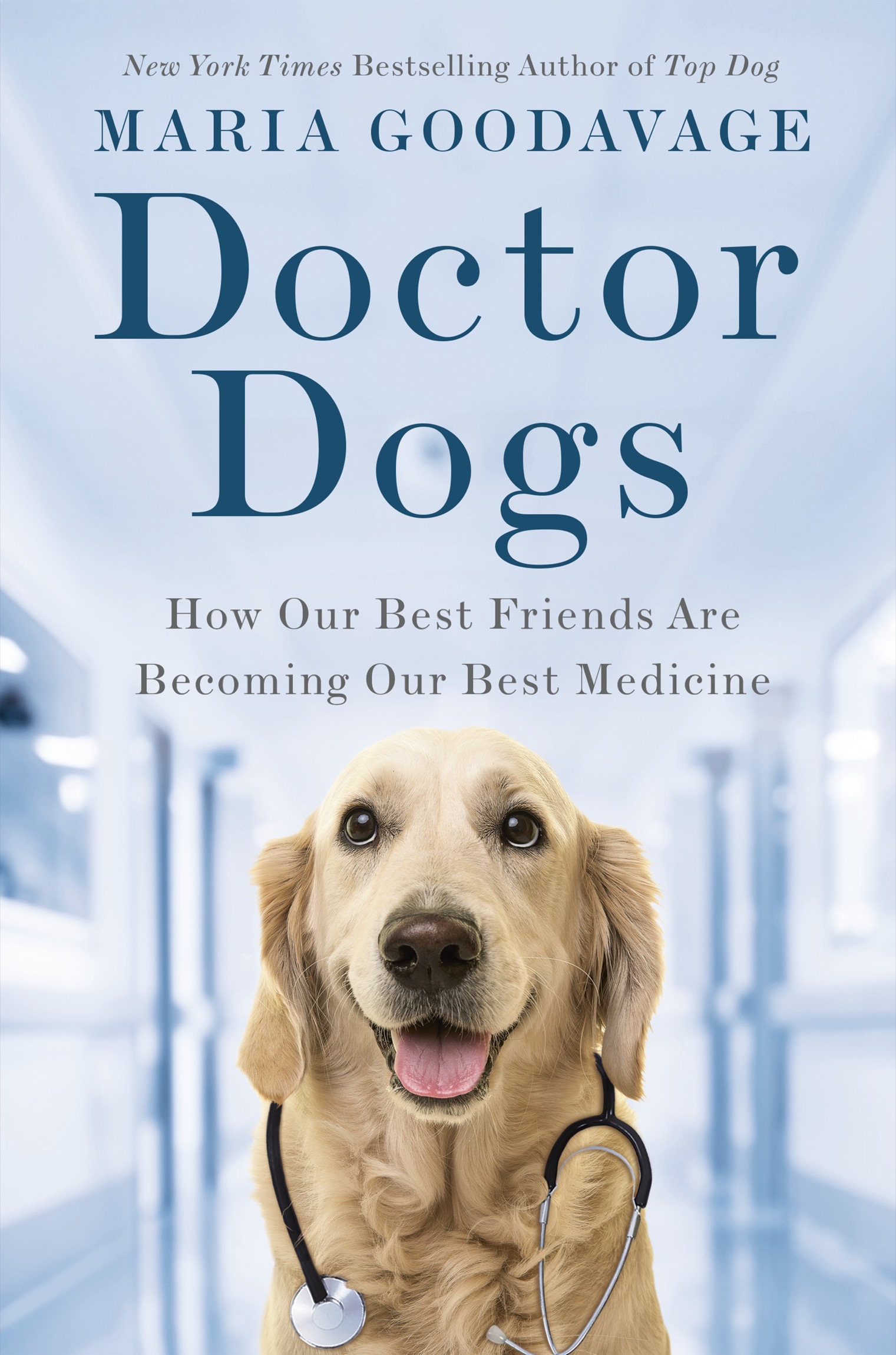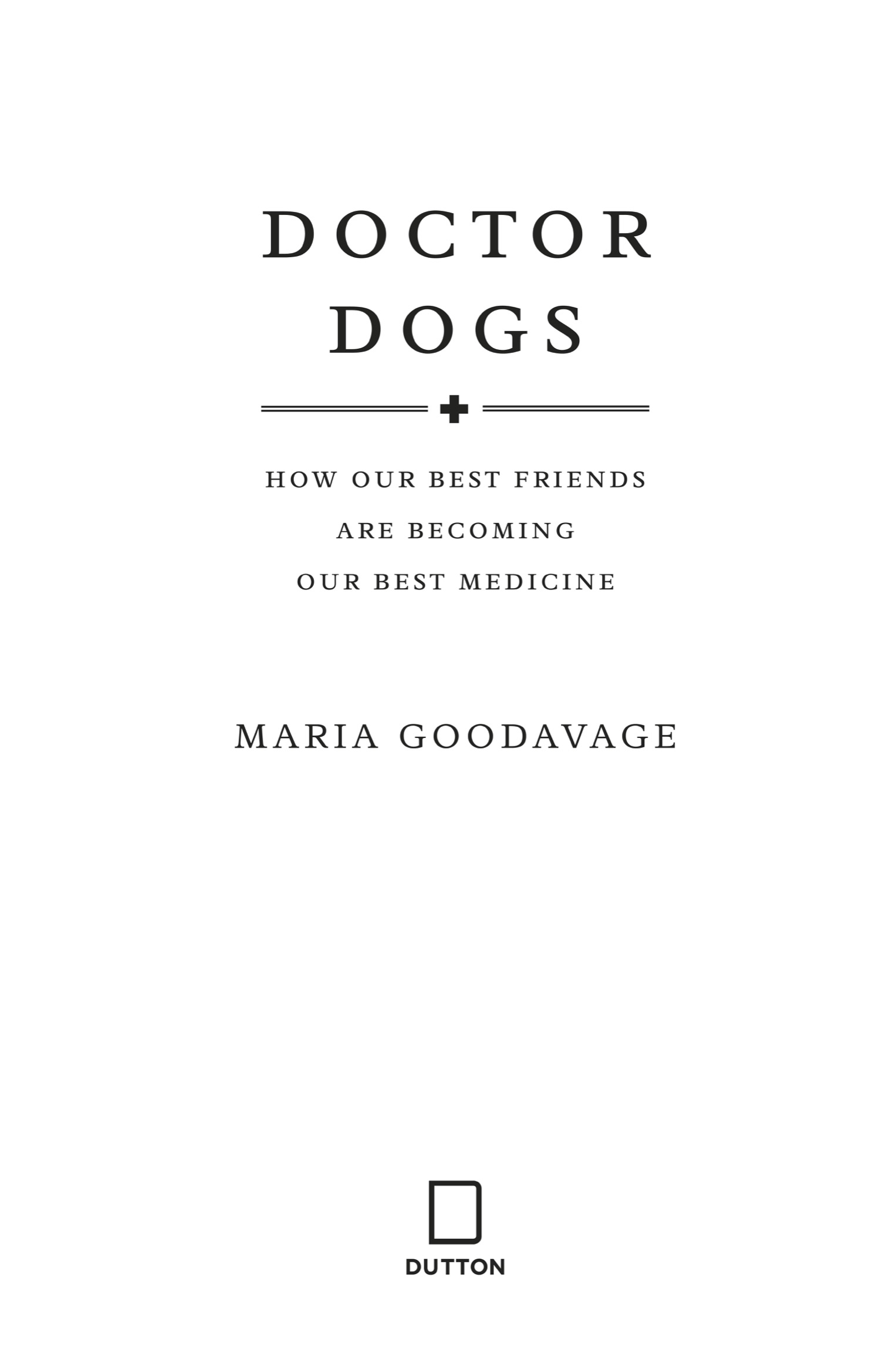PRAISE FOR DOCTOR DOGS
If youre a dog lover, Doctor Dogs is bound to become one of your all-time favorite books. Its a hope-inspiring testament to the power of the humananimal bonda bond that science is showing to be even more powerful than we ever suspected. Youll fall in love with every dog in this book, and youll swoon with happiness and relief for all the humans theyve helped. Doctor Dogs gets four paws up!
Laura T. Coffey, author of My Old Dog: Rescued Pets with Remarkable Second Acts
If you take an amazing subject and put it in the hands of a wonderful writer, you get... SPOILER ALERT... a truly fantastic book. Every single page of Maria Goodavages Doctor Dogs is made up of remarkable research and storytelling.
David Rosenfelt, author of Dogtripping
A captivating, groundbreaking, meticulously researched book about the incredible new ways dogs are sniffing out disease and helping people with physical and mental health issues. Youll laugh, youll cry, youll want to hug the nearest dog! The life a doctor dog saves may one day be your own.
Dr. Marty Becker, Americas Veterinarian, founder of FearFreeHappyHomes.com
Goodavage shows that there are many people who, when they say, My dog saved my life, dont mean this in some metaphorical sense. Goodavage is a witty and compassionate guide and supremely well-informed. I learned a lot!
Professor Clive D. L. Wynne, director of the Canine Science Collaboratory at Arizona State University and author of Dog Is Love: Why and How Your Dog Loves You
ALSO BY MARIA GOODAVAGE
Soldier Dogs
Top Dog
Secret Service Dogs

An imprint of Penguin Random House LLC
penguinrandomhouse.com

Copyright 2019 by Maria Goodavage
Penguin supports copyright. Copyright fuels creativity, encourages diverse voices, promotes free speech, and creates a vibrant culture. Thank you for buying an authorized edition of this book and for complying with copyright laws by not reproducing, scanning, or distributing any part of it in any form without permission. You are supporting writers and allowing Penguin to continue to publish books for every reader.
DUTTON and the D colophon are registered trademarks of Penguin Random House LLC.
LIBRARY OF CONGRESS CATALOGING-IN-PUBLICATION DATA
Names: Goodavage, Maria, 1962 author.
Title: Doctor dogs: how our best friends are becoming our best medicine / Maria Goodavage.
Description: New York: Dutton, an imprint of Penguin Random House, LLC, [2019] | Includes bibliographical references and index.
Identifiers: LCCN 2019004511 | ISBN 9781524743048 (hardcover) | ISBN 9781524743055 (ebook)
Subjects: LCSH: DogsTherapeutic use. | Service dogs. | Human-animal relationships.
Classification: LCC RM931.D63 G66 2019 | DDC 615.8/5158dc23
LC record available at https://lccn.loc.gov/2019004511
While the author has made every effort to provide accurate telephone numbers, internet addresses, and other contact information at the time of publication, neither the publisher nor the author assumes any responsibility for errors or for changes that occur after publication. Further, the publisher does not have any control over and does not assume any responsibility for author or third-party websites or their content.
Neither the publisher nor the author is engaged in rendering professional advice or services to the individual reader. The ideas, procedures, and suggestions contained in this book are not intended as a substitute for consulting with your physician. All matters regarding your health require medical supervision. Neither the author nor the publisher shall be liable or responsible for any loss or damage allegedly arising from any information or suggestion in this book.
Version_1
To Laura Altair,
Keep reaching for the stars, and always remember to look at the world with twinkling eyes. And to floss.
Love,
Your proud mother,
Mama
CONTENTS
Dogs and Diabetics
Seizure-Alert Dogs and the People They Love
How Canines May One Day Help You Survive Cancer
Multitalented, Multipurpose Medical Dogs
And Other Problems Tackled by Doctor Dog Specialists
Super Dogs for Superbugs
From Freuds Dog to the Trombones and Hills on the Autism Spectrum
The Difference Dogs Make in Mental Illness
Dogs on the Front Lines of PTSD
Dogs in Times of Crisis and Disaster
INTRODUCTION
THE DOCTORS NOSE
The dog nose arrived at my house in a box that said it contained a Corelle eighteen-ounce soup/cereal bowl. At the time, I had no idea what was actually inside. Gus barked the UPS truck good riddance while I checked the name on the return address. It was definitely not a bowl.
It had been weeks since Matthew Staymates, PhD, a fluid dynamicist and mechanical engineer with the National Institute of Standards and Technology (NIST), had said he would send me something interesting. It felt like Christmas in May as I drew the knife in a shallow track along the tape. The top of the box popped open like double doors to reveal a wad of crinkly brown paper. What could it be?
Gus was curious, too. He stood by me at the kitchen counter, his yellow Lab face smiling, his big brown eyes glancing from me to the package and back to me.
Open it! Open it! What did we get?!
I pulled away one corner of the paper, then the next. Something white and cylindrical peeked out. It looked like a cup. A cup? I ripped through the rest of the paper.
In my hands I now held a heavy-duty hard plastic replica of a dogs nose. Not some cheap costume-shop version, but a 3-D-printed model of the exterior of a real dogs snout, life-size. It was all white except for the soft black rhinarium (the cold wet part of a dogs nose), with a perfect rendition of the nostrils, down to the little curvy slits on the side.
The inside of this particular nose was mostly hollow. It wasnt anything like the intricate interior anatomy that makes a real dogs nose such a superb sniffer. When I held it with the nostril end facing down, it looked like a strange Japanese teacup that would never balance on a table. NIST was written in it with a Sharpie.
From my interviews with Dr. Staymates, I knew he had created this nose himself on a 3-D printer. He used CAD (computer-aided design) files that had been supplied to him by fellow fluid dynamicist Brent Craven, PhD, who had created models of the complex inside of this same dogs nose.
Compared with Dr. Cravens model, this nose was simplicity itself. And yet even this simple structure has been shown to vastly improve detection of odors when applied to a sniffing system. When Dr. Staymates and his colleagues used a similar design on a vapor detection system and had it mimic the way dogs sniffinhaling and exhaling about five times a second rather than just drawing in airvapor detection improved sixteen-fold.
This kind of canine biomimicry, when put to use with technology that already exists, could have far-reaching effects for future scent detection. As Dr. Staymates and his colleagues wrote in

